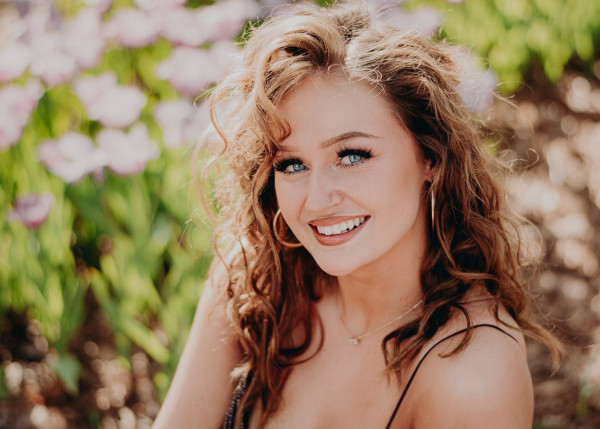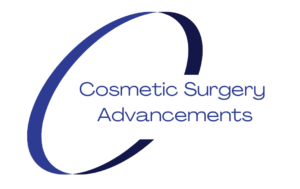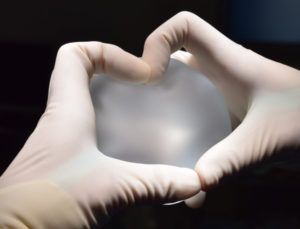Breast Augmentation With Implants
Breast augmentation can make it possible to achieve the shape and size of breasts you are comfortable with and feel good about.
UK
The cost of breast augmentation typically varies between £3500 and £8000 – Normally in the UK you will be given an all inclusive cost which will also cover all aftercare.
US/ Canada
Breast augmentation typically varies between $3500 and $8000 – The charge may not include all of your hospital, medication and aftercare. Always ask for a list of what is included and if there are any additional charges you can expect.
Australia
Breast augmentation typically varies between $8000 and $16000 – The charge may not include all of your hospital, medication and aftercare. Always ask for a list of what is included and if there are any additional charges you can expect.
New Zealand
Breast augmentation typically varies between $16000 and $21000 – The charge may not include all of your hospital, medication and aftercare. Always ask for a list of what is included and if there are any additional charges you can expect.
The cost of breast augmentation will depend on various factors including your choice of:
- Plastic Surgeon – Plastic surgeons do not all charge the same rate for breast augmentation, this cost is a significant part of the overall cost. You may also be required to pay for a consultation.
- Medical Tests – Prior to surgery you will need blood tests and may require other medical tests, this may incur an additional charge
- Breast Implants – The cost of breast implants typically ranges between £700 and £1200. Non anatomical (round) implants tend to cost less than anatomical (teardrop) implants.
- Anesthetic – Breast augmentation can be performed under either a general anesthetic or local anesthetic. If your plastic surgeon uses general anesthetic this will normally increase the overall cost.
- Location – The city or state can make breast augmentation more or less expensive.
- Hospital / Clinic – The overall cost will also depend on the hospital or clinic charges, which can vary by approximately £1000 or $2000. Typically breast augmentation with local anesthetic can be performed in a clinic which will reduce the overall cost. Breast augmentation performed in a hospital is normally done as a day case procedure. If your plastic surgeon wants you to stay overnight in hospital, then this is likely to increase the overall cost.

Silicone vs Saline Breast Implants
All implants have an outer silicone shell which will shed very small particles. Implants can be filled with silicone, saline or a combination of both.
Silicone Implants – Most plastic surgeons agree that silicone gel filled implants tend to feel more natural and are less likely to wrinkle. If a silicone implant ruptures it can be undetectable without a mammogram. Silicone gel can migrate into other tissues if silicone implants rupture, which can cause small lumps (granulomas). Silicone can also accumulate in lymph nodes which can cause localized swelling.
In the UK, Australia and New Zealand silicone implants were never withdrawn from use.
In the US in January 1992 the FDA called for a voluntary restriction of the use of silicone gel breast implants. This limits the use of silicone breast implants for reconstruction or to correct congenital deformities. In November 2006 the FDA lifted restrictions on the use of silicone breast implants, for women aged 22 and over.
Saline Implants – Saline implants are filled with saline (salt water) and they are more likely to ripple, fold or rupture than silicone implants. Some surgeons believe they feel less natural than silicone. If a saline implant ruptures this is normally noticeable within 24 hours as the breast deflates. This happens because the saline is absorbed by the body and expelled naturally.
Extra Large Breast Implants
Silicone filled breast implants are only available up to 800cc unless they are custom made.There are some implants that have a silicone inner section of 800cc and a separate saline section of 200cc, which makes 1000cc overall.
Saline filled breast implants can be overfilled during a one stage procedure up to approximately 2500cc. Tissue expanders often referred to as expandable implants can be overfilled with saline gradually, if you are not able to accommodate the cc size you want during your first breast augmentation.
Incision Options
Inframammary Fold – Made in the crease of the breast or where the new crease will sit, the scar is normally well hidden when standing upright, but may be visible with arms raised or when lying down.
Periareolar – Normally created in the lower crescent of the outer edge of the areola. Once scars heal they are usually hidden very well, however if they do not heal well they will be highly visible.
Axillary – Made in the armpit this option can mae implant placement more challenging, especially with larger silicone filled implants.
Transumbillical – This incision is made in the belly button if you have transumbilical breast augmentation (TUBA). This technique can only be performed using saline filled implants.

Over or Under Muscle Breast Implant Placement
Over the muscle (subglandular) placement
Refers to when the breast implants sit above the pectoral muscle, where natural breast tissue sits. When there is a lack of breast tissue it might not be possible to place implants over the muscle.
Pros
- It tends to give you a better cleavage
- Patients can normally opt for a larger breast implant size
- Implants are not distorted with the flexing of chest muscles
Cons
- More likely to feel the implant beneath the skin
- Increased risk of bottoming out, which can distort breast shape and cause nipples to move higher up
- Breast skin will stretch more which will cause breasts to drop (sag) faster
- Slightly higher rate of capsular contraction
- Silicone implants will interfere with mammograms
Under the muscle (submuscular) placement
Refers to when the breast implants sit partially beneath the pectoral muscle. The most common technique is called dual plane, where only the top part of the implant is covered by the pectoral muscle.
Pros
- Less likely to feel or see the implant (especially with saline filled implants)
- Less likely to bottom out
- Breasts sag less over time as the muscle provides some inner support for the implant
- Slightly lower rate of capsular contraction
- Silicone breast implants will not interfere with mammograms
Cons
- Implants are distorted with the flexing of chest muscles
- Less likely to achieve such a tight cleavage
- Will normally need to use a smaller size implant
Recovery Time
Week One
- Recovery may be faster with an above the muscle (subglandular) placement. You will typically feel very tired for the first three days.
- Your breasts will be swollen and you will probably have some pain and discomfort.
- Your breasts will be higher up and may feel very firm.
- Most plastic surgeons will advise you not to drive for the first seven days after breast augmentation.
- If you work a non strenuous job which does not involve lifting or stretching you will probably feel well enough to return to work after one week.
After 10 to 14 Days
- You will typically have a follow up consultation
- Your stitches may dissolve or need to be removed
- Some of the swelling will have gone and your breasts will normally feel softer
After Six Weeks
- The majority of swelling should have gone
- Your breasts will have dropped slightly and should feel softer.
- You can start to do strenuous exercise and stretching
After Six Months
- Your breast size and shape will not change significantly
- Your breasts should feel soft
- Your scars will have normally faded to fine white lines
Risks and Complications
Any type of operation carries a small risk of:
- Excess bleeding and blood clots which can be life threatening
- Infection, this would be treated with antibiotics in rare circumstances the implant may need to be removed
- Allergic reaction to anesthetic, antibiotics or painkillers or products used during surgery, such latex.
Contact your plastic surgeon, hospital or clinic where you had the operation or a doctor as soon as possible if you have any concerns, increased pain or swelling, or symptoms such as a burning sensation and red skin.
The most common risks and complications of breast augmentation include:
- Seromas (fluid collection or hematomas (blood collection) around the implants, this is usually easily resolved with drains.
- Capsular contraction which causes the scar tissue to become thicker and shrink which may cause your breasts to ride up on your chest, look rounder and feel firmer.
- Implant displacement, implants can bottom out, move sideways or rotate resulting in an abnormal shape
- Less sensitivity in the nipples or areas of the breast
- Obvious rippling of the implant which is visible through the skin
- Seeing or feeling implant edges beneath the skin
- Implant rupture
- Thick scars and keloid scars
- Problems breastfeeding or slower release of breast milk
Discuss the risks and complications with your plastic surgeon and how they’ll be corrected if any occur following your surgery or at a later date after your breast augmentation.
Additional Information
Concerns
In the UK if you have concerns about the hospital or clinic you should contact the Care Quality Commission (CQC).
If you are in the UK and you are not happy with the care your plastic surgeon provides or believe you have been subject to medical negligence you can make a complaint to the General Medical Council (GMC).
The Royal College of Surgeons provides useful advice if you are concerned about any aspect of your care at any point.
Breast Implants Replacement
Breast implants may need to be replaced due to infection, late onset seromas (fluid accumulation), implant misplacement or implant rupture. Saline implants are more likely to rupture than silicone implants. Extra large breast implants have a higher risk of implant displacement and rupture and will normally need replacing after 10 years.
Breast Implant Safety
Breast Implant Associated Anaplastic Large Cell Lymphoma (BIA-ALCL) – Some styles of breast implants have been linked to a type of immune system cell cancer, called breast implant associated anaplastic large cell lymphoma (BIA-ALCL). There is a higher associated rate of BIA-ALCL with textured breast implants. Both silicone and saline filled breast implants can cause BIA-ALCL
Breast Implant Illness (BII) – Breast implants have been associated with a higher risk of developing autoimmune/inflammatory syndrome. This causes inflammation, which may trigger symptoms such as fatigue, rash, painful or aching joints, generalized pain, swelling and difficulty focusing.
Breast Cancer Screening (mammogram) With Implants
If you have a mammogram tell the practitioner that you have breast implants. X-rays cannot pass through silicone implants, so they may need to adapt how the mammogram is done to make it easier to see as much breast tissue as possible on the scan.
Read more about breast cancer screening.
Breast Augmentation With Fat Transfer
Enlarging breasts using specialized fat (autologous) transfer can augment the size and shape of breasts without implants. Excess fat can be removed from the hips, abdomen, lower back, or/and thighs with liposuction, and then strategically injected into the breasts.
Pros
- No breast implants
- Feels like natural breast tissue
- Looks natural with no scarring
- Minimally invasive
- Local anesthetic
Cons
- Fat can die which can cause breasts to reduce in shape or look lumpy.
- Fat can form into small hard lumps
- Breast increase in size is limited to between one and two cup sizes
- Normally requires multiple procedures over a few months

Recovery Time
Week One
- Your breasts may feel sore, swollen and bruised
- You will probably have some pain and discomfort.
- Your breasts will be higher up and may feel very firm.
After 10 to 14 Days
- You will typically have a follow up consultation and may need another fat transfer procedure
- Most of the swelling will have gone and your breasts will normally feel softer
After Six Months
- Your breast size and shape will not change significantly
- Your breasts should feel soft
Risks and Complications
Any type of operation carries a small risk of:
- Infection, this would be treated with antibiotics in rare circumstances the implant may need to be removed
- Allergic reaction to anesthetic, antibiotics or painkillers or products used during surgery, such latex.
Contact your plastic surgeon, hospital or clinic where you had the operation or a doctor as soon as possible if you have any concerns, increased pain or swelling, or symptoms such as a burning sensation and red skin.
The most common risks and complications of breast augmentation with fat transfer include:
- Death of fat cells resulting in either a reduced breast size or an abnormal shape
- Hard lumps of fat forming
- Less sensitivity in the nipples or areas of the breast
Discuss the risks and complications with your plastic surgeon and how they’ll be corrected if any occur following your surgery or at a later date after your breast augmentation.
Breast Cancer Screening (mammogram) With Fat Transfer
If you have a mammogram tell the practitioner that you have had fat transfer in your breasts. Although transferred fat will not usually interfere with mammograms, small lumps of fat can be difficult to distinguish from malignant growths.
Further Resources
Breast Augmentation With Breast Implants
Options and Risks of Extra Large Breast Implants
Breast Implant Illness (BII) and Breast Implant Safety
Transumbilical Breast Augmentation (T.U.B.A)
Questions to Ask Before Breast Augmentation
- Do you have a preferred manufacturer of breast implants and if so why?
- If my breast implants are withdrawn from the worldwide market will there be any charges associated with implant removal or implant removal and replacement?
- Do you have a preference between silicone or saline-filled implants and if so, why?
- Do you have a preferred incision option and if so, why?
- What alternative incision options do you offer?
- Would you recommend over the muscle (subglandular) or under the muscle (submuscular) placement for breast implants?
- What is the largest cc volume, silicone breast implant and the largest cc volume saline implant, you have ever used?
- Do you use permanent expandable implants and what is the largest cc volume you have filled them and over how many appointments?
- Do you ever use mesh or internal sutures to support larger implants?
- When did you start performing breast augmentation procedures?
- Do you use any specific surgical techniques or methods?
- How many breast augmentation procedures do you perform on average per month?
- What percentage of your patients needed a second breast augmentation due to complications?
- What are the most common complications you encounter with breast augmentation?
- What charges will I incur if I am not satisfied and want a secondary procedure?
- Can I speak with you again before the procedure if I have any queries or concerns?
- Will I need a local or general anesthetic?
- Where will the procedure be performed?
- Will I go home the same day or stay in the hospital overnight?
- What happens if I need to go to/stay in the hospital longer than normal?
- What happens if I need intensive care?
- Are there any additional charges for tests, medication, facility or anesthetist charges that I need to be aware of?
- If I become ill when I am at home, who do I call?
- Will there be any charges if I am admitted to hospital following my breast augmentation due to a related complication of the procedure?
- How many follow up consultations do I receive without charge?
- How long is aftercare available after my procedure without charge?
- How can I access aftercare or revision surgery if you retire or are no longer able to perform surgery?

How to Find a Plastic Surgeon for Breast Augmentation
UK
British Association of Aesthetic Plastic Surgeons – BAAPS
British Association of Plastic, Reconstructive and Aesthetic Surgeons – BAPRAS
USA
American Society for Aesthetic Plastic Surgery – ASAPS
American Association of Plastic Surgeons – AAPS
American Society of Plastic Surgery – ASPS
Australia
Australasian Society of Aesthetic and Plastic Surgeons – ASAPS
Australian Society of Plastic Surgeons – ASPS
New Zealand
New Zealand Association of Plastic Surgeons – NZAPS
My Opinion
You should never feel pressured to book a procedure at a consultation. Before you make your final decision take some time to think about the risks and complications, and what is the most important factor for you to be happy with your breast augmentation.
Annabelle Baugh | Founder

